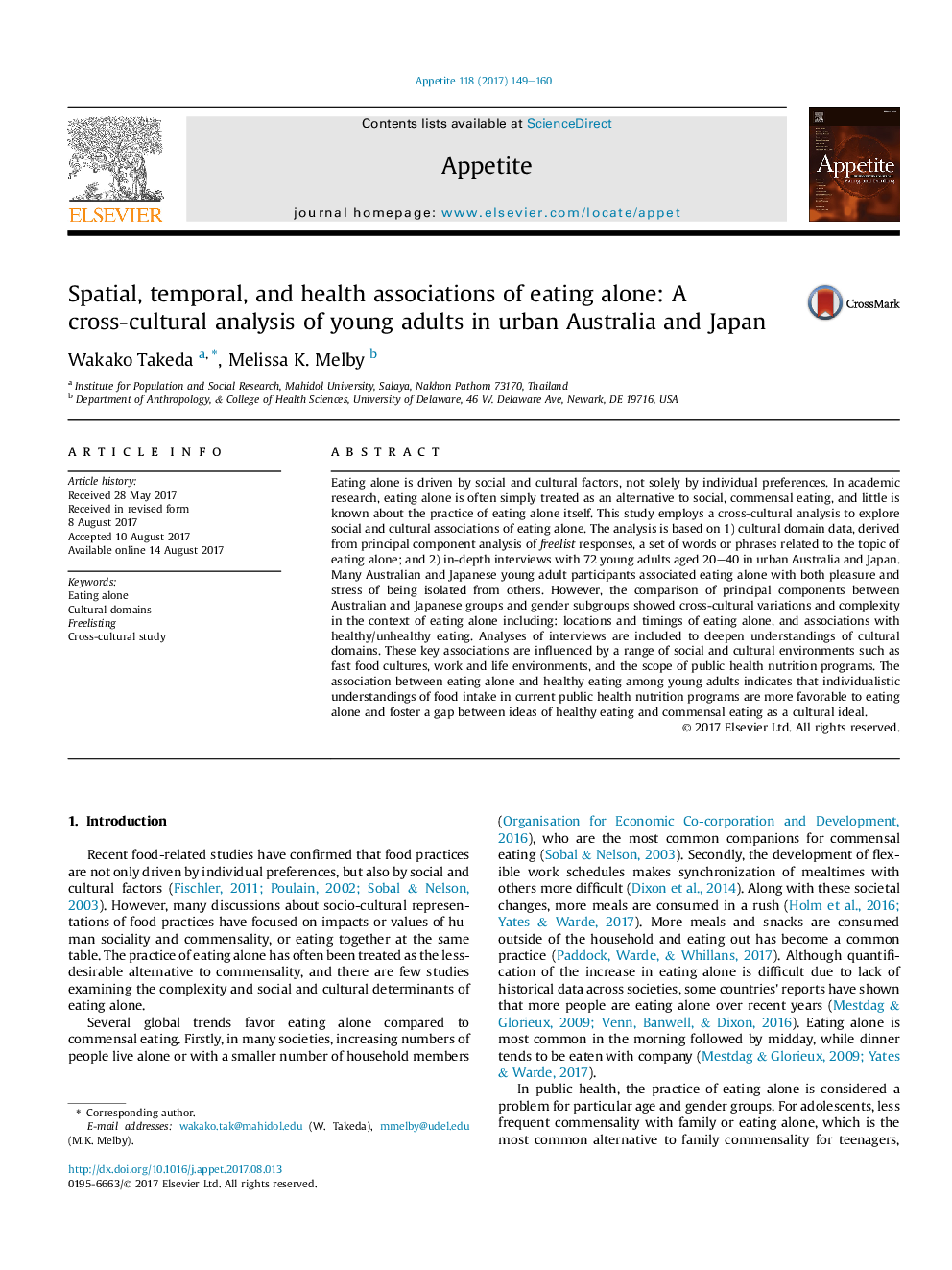| Article ID | Journal | Published Year | Pages | File Type |
|---|---|---|---|---|
| 5044233 | Appetite | 2017 | 12 Pages |
Eating alone is driven by social and cultural factors, not solely by individual preferences. In academic research, eating alone is often simply treated as an alternative to social, commensal eating, and little is known about the practice of eating alone itself. This study employs a cross-cultural analysis to explore social and cultural associations of eating alone. The analysis is based on 1) cultural domain data, derived from principal component analysis of freelist responses, a set of words or phrases related to the topic of eating alone; and 2) in-depth interviews with 72 young adults aged 20-40 in urban Australia and Japan. Many Australian and Japanese young adult participants associated eating alone with both pleasure and stress of being isolated from others. However, the comparison of principal components between Australian and Japanese groups and gender subgroups showed cross-cultural variations and complexity in the context of eating alone including: locations and timings of eating alone, and associations with healthy/unhealthy eating. Analyses of interviews are included to deepen understandings of cultural domains. These key associations are influenced by a range of social and cultural environments such as fast food cultures, work and life environments, and the scope of public health nutrition programs. The association between eating alone and healthy eating among young adults indicates that individualistic understandings of food intake in current public health nutrition programs are more favorable to eating alone and foster a gap between ideas of healthy eating and commensal eating as a cultural ideal.
